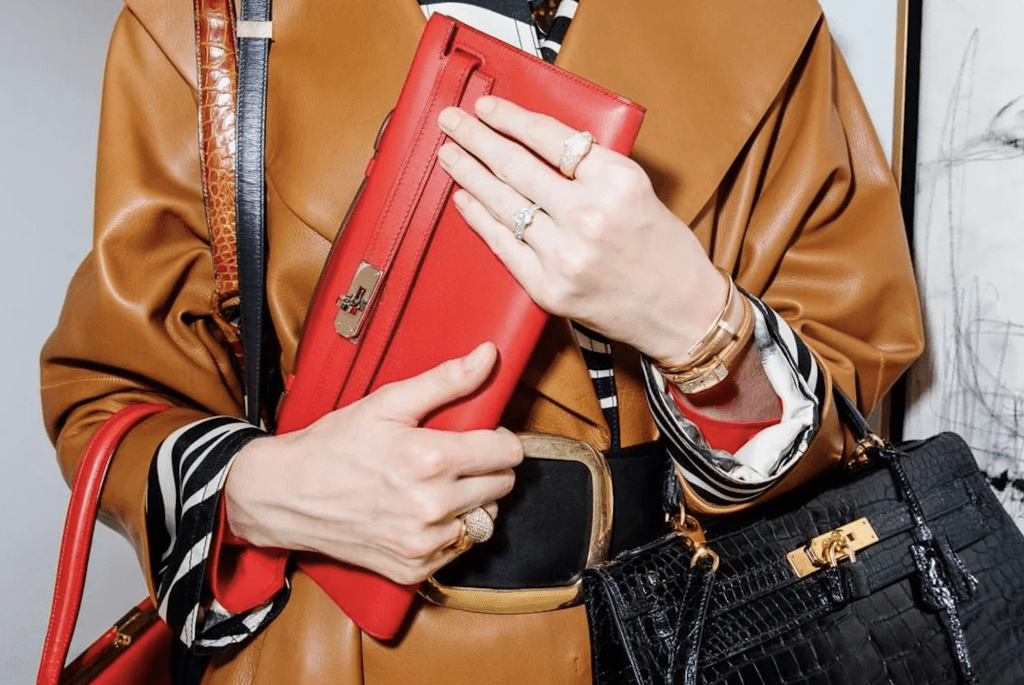High fashion brands are sliding into the secondary market, with Balenciaga, Valentino, Jean Paul Gaultier, Oscar de la Renta, and brands under the Kering umbrella among the companies looking to take some stake in the market for pre-owned products, one that is very much on the rise. Sales of pre-owned luxury goods “were up 65 percent last year relative to 2017, compared with a 12 percent rise in new luxury sales,” the Wall Street Journal reported this weekend, citing Bain & Co. data, which forecasts that “over the next five years,” sales within the luxury resale market “will increase annually at around 15 percent, double the expected rate of new sales.”
While a number of very-big-names in luxury have been unapologetic about their unwillingness to actively participate in the resale market (Louis Vuitton, Chanel, and Hermès come to mind), the tide appears to be changing to some extent if the likes of Gucci and co. are any indication – and to some extent, for good reason. Getting into the burgeoning market for pre-owned goods stands to enable fashion and luxury goods brands to tap into the cash that consumers – including the coveted Gen-Z and millennial cohorts – are routinely spending in this segment of the market, prompted in many cases by the affordability that the resale market provides (as distinct from enduring price-hikes by brands) and the elements of sustainability at play.
At the same time, there may be an even more important driver behind high-end brands’ pushes to enter into this space: control. As TFL reported back in 2019, the foundation upon which luxury depends – a mix of exclusivity, high prices, meticulously-crafted marketing, valuable intellectual property, and careful governance of distribution – may be influx given the mainstreaming of resale, thereby, making control one of the critical elements for brands that are looking to maintain their positions in the upper echelon of the industry (and thus, command the necessary pricing power for their offerings).
Chances are, if brands want to maintain some semblance of command over what happens to their often-trademark-emblazoned-goods after the initial sale of those goods (and if enduring lawsuits over authentication after-the-fact tell us anything, it seems that many of them do), taking a larger role in resale – either by way of in-house operations (à la Gucci) or partnerships (such as those between Vestiaire and Alexander McQueen, The RealReal and Burberry, and Reflaunt and Balenciaga) could prove useful. The potential for brands to be tempted to enter into the secondary market (or alternatively, trademark/false advertising litigation) may be furthered by the fact that their wares are being offered up – and advertised – in this capacity with or without their involvement or authorization.
Also potentially luring brands into resale? Green credentials, which can be parlayed into Gen Z and millennial-centric goodwill. “We think initiatives in both resale and rental are important in raising the brand’s reputation with younger consumers,” Jefferies analysts Flavio Cereda and Kathyrn Parker stated in a note this summer, reflecting on Sandro and Maje-owner SMCP’s first-half results. They stated that secondary market-centric efforts by the likes of Sandro, as well as Gucci, Valentino, and Jean Paul Gaultier, among others, are “further evidence” that the high-end fashion/luxury market is looking to “address sustainability issues.”
And finally, brands are likely looking to garner benefits from a post-sale consumer engagement and/or loyalty perspective by tapping into the secondary market (as opposed to opting out or taking a strong stance against it by way of litigation, for instance).
Luxury Hold-Outs
Despite many elements lining up in favor of companies engaging in resale activity, the matter is not so simple that luxury brands are rushing to put their stamp of approval on pre-owned products. It is difficult not to notice that many of the biggest names in the industry continue to distance themselves. This spring, Hermès CEO Axel Dumas, for example, explicitly shot down the prospect during an earnings call with analysts, saying that active participation by the brand in the resale market “would be to the detriment of our regular client who comes to the store.”
Meanwhile, LVMH’s head of image and environment Antoine Arnault revealed this spring that the group “will stay away from that secondhand market” for the time being; the statement came after Mr. Arnault said in 2020 that LVMH was “looking at [the resale segment] carefully,” but also noting that it was “still a little early” to say whether the group would enter into the space. (More recently, LVMH confirmed this summer that it does not intend to participate in the secondhand market and emphasized efforts to offer repair services for its products, instead.) And last year, Bruno Pavlovsky, president of fashion and president of Chanel SAS, explained the brand’s own aversion to resale, telling WWD that, among other things, “We want to retain control of our distribution.”
The balancing of factors that brands must do when considering their role in resale market includes considerations of things like cannibalization, as well as the demanding and time-consuming nature of such activities if carried out in house, especially since this is a new market for most brands.
One need not look further than the balance sheet of The RealReal to see just how difficult – and expensive – it is to successfully build, operate, and scale a luxury resale company. “The business has been a stinker for years,” Martin Peers wrote for The Information in June. “Its losses have mounted as its revenue has grown—we think red ink is supposed to dry up as revenue expands.” In addition to being a costly and consuming endeavor, complete with overhead for platform infrastructure, authentication efforts, etc., and no easy path to profitability, brands may be further put off by the fact that they will likely never maintain complete control over the increasingly robust – and crowded – resale channel. (In other words, the reality of what resale distribution would look like as a whole is a far cry from their retail operations; after all, most brands in the upper-end of the spectrum either consist of direct-to-consumers businesses or in the case of a number of Kering brands, for instance, are in the process of walking way back on their wholesale efforts in order to exclusively maintain self-owned and operated retail stores.)
Still yet, there is the unignorable issue of competition, namely, between a company’s new offerings and any pre-owned ones. To date, “the fear” among fashion’s well-established houses “is that we are cannibalizing their business,” Julie Wainwright, the founder and former CEO of The RealReal, has said. And opinions on this front are mixed. McKinsey analysts, for instance, stated back in 2021 that if “done prudently, brand entry [in the resale market] should not erode margins, and would result in only limited cannibalization.” Achim Berg, McKinsey’s leader of McKinsey’s apparel, fashion, and luxury group, has, nonetheless, referred to the potential for cannibalization as “the elephant in the room” for luxury.
More recently, Cereda and Parker stated this spring that when it comes to resale, brands are cognizant of and “keen to limit any cannibalization of primary products.”
For the biggest brands, the potential drawbacks and the risks may be too great to allow for an embrace of resale at this time (or ever). On the other hand, the reluctance of some of the biggest names may be the result of their well-documented hesitation to divert from their core business and/or their long-standing understanding of how luxury should operate (think: their unwillingness to operate fully in an e-commerce capacity). Chances are, it very well may be a mix of both.











